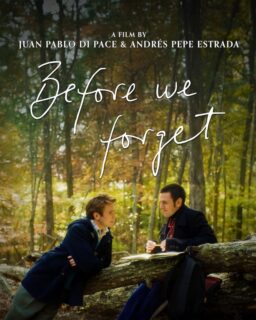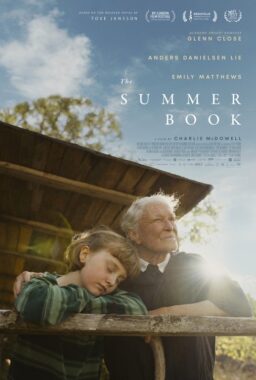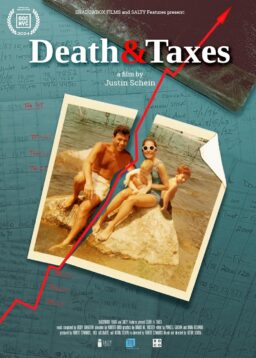 Like many tales about the good vs. the evil, the evil mostly steals the show from the good in “The Devil and Daniel Webster” (1941), a cautionary moral tale based on Stephen Vincent Benét’s short story which is sort of a New England version of the tale of Faust. Though it was made 70 years ago, the movie remains as a darkly enjoyable movie with the wonderful moments that can both amuse and chill us with the subtle creepiness pervading its rural background. Sure, we are happy to see the soul of an ordinary American luckily saved from the eternal damnation in the end, but, folks, can we deny that we had a fun with Mephistopheles before the obligatory finale?
Like many tales about the good vs. the evil, the evil mostly steals the show from the good in “The Devil and Daniel Webster” (1941), a cautionary moral tale based on Stephen Vincent Benét’s short story which is sort of a New England version of the tale of Faust. Though it was made 70 years ago, the movie remains as a darkly enjoyable movie with the wonderful moments that can both amuse and chill us with the subtle creepiness pervading its rural background. Sure, we are happy to see the soul of an ordinary American luckily saved from the eternal damnation in the end, but, folks, can we deny that we had a fun with Mephistopheles before the obligatory finale?
Get the <a href=”http://www.widgetbox.com/widget/our-foreign-correspondents-rebert”>Our Foreign Correspondents</a> widget and many other <a href=”http://www.widgetbox.com/”>great free widgets</a> at <a href=”http://www.widgetbox.com”>Widgetbox</a>! Not seeing a widget? (<a href=”http://docs.widgetbox.com/using-widgets/installing-widgets/why-cant-i-see-my-widget/”>More info</a>)
In the opening scene after the formal opening credit equally introducing the cast and crews participating in the film, we see from behind a suspicious stranger come to the country town in New Hampshire. He checks his ledger, and we get the brief basic information about our unlucky hero, a poor farmer named Jabez Stone (Jabez Stone, Cross Corners, New Hampshire, Age 27, married two years, children none, credits none).

It is 1840, and Jabez (James Craig) is having a very difficult time like his neighbour farmers. There is some talk about forming the union among his neighbours, and there is also the news from Washington about the movement to support the farmers, mainly promoted by the local hero and famous orator/politician Daniel Webster (Edward Arnold). But Jabez desperately needs the money right now. Unless he pays the money to the local loan shark Miser Stevens (John Qualen), he and his family, his wife Mary (Anne Shirley) and his mother (Jane Darwell), will be evicted from their home. Jabez’s plight came as something real to the audiences who experienced the bleak hardships due to the depression during the 1930s. Many people struggling with the current depression in US probably respond in the same way, too.

With Mary and his mother at his side as moral/spiritual support, Jabez has barely managed to maintain his farm, but in such a hardship like this, there is always one very bad day bound to come upon him. Fed up with the hard situation culminating with several bad lucks, he impulsively blurts out his anger: “Consarn it, that’s enough to make a man sell his soul to the devil. And I would for about the two cents!”


Talk of the devil – the devil (Walter Huston) himself instantly visits him as Mr. Scratch, a nickname used in New England among his many names in the human history. Accompanied with the subtle but eerie sound recorded from the telephone wires humming in the quiet early morning in the soundtrack, the sounds of disturbed animals in the barn, and the spooky simmering light lit behind Huston, this memorable appearance of Mr. Scratch is striking enough to remind us his unearthly nature.



On the surface, Mr. Scratch is a jolly, smart-talking businessman who has the offer you cannot refuse easily. Jabez is frightened at first, but he is quickly drawn to Mr. Scratch’s offer. If he sells his trivial soul to Mr. Scratch (“A soul is nothing. Can you see it, smell it, or touch it?”), then Mr. Scratch will provide him financial wealth and good luck for 7 years. Any sensible men know this is a horrible deal even without looking at a simple, impeccable contract drafted by Mr. Scratch, but who can blame desperate Jabez? In addition, the characters in the cautionary tales are destined to come into the danger while quite oblivious to it just because they want to give a lesson to us, aren’t they?

As soon as the contract is signed by Jabez, the money and fortune literally pour on him. First, a vast amount of Hessian gold coins is suddenly found under the floor of his barn. He can pay all of his debt to Miser Stevens. He can buy anything he wants for the farm and his family. Also, he gets the honor not only to get acquainted with Daniel Webster and but also to give a short but nice speech to his neighbors instead of Webster, who becomes “incidentally” drowsy. Furthermore, only his crops survive from a sudden “natural disaster,” so his neighbors become his employees while borrowing money from him. As time goes by, he gets richer and richer, and, as Mr. Scratch promises him, he becomes the wealthiest man around his town. But soon, while becoming a greedy man far different from what he was, Jabez begins to realize he made a big mistake. He regrets, but most of the promised 7 years has already passed – and Mr. Scratch will come to him for deciding whether there will be the renewal, which will require Jabez to do an unthinkable thing, or the termination, which will send him to…
Compared to the modern movies associated with the devil, “The Devil and Daniel Webster” takes a more subdued approach to its dark elements, mainly due to the restrictions during its era. As a matter of fact, the original title was officially changed to “All That Money Can Buy” before its original release to be distributed easily in the American South – and also not to be confused with “The Devil and Miss Jones” (1941). One of the amusing parts in the movie is that Jabez keeps saying ‘consarn it’ instead of ‘damn it’. I know, it’s the 19th century, but this remind me how much trouble Hollywood took to allow Clark Gable say ‘damn’ just for once in “Gone With the Wind“(1939) at that time.
The film has effective ways to tell its story while making a detour around the restrictions. While never directly mentioned, the fiendish aspects of the story are slyly implied to us. When Belle (Simone Simon), sent by Mr. Scratch right after Mary gives a birth to Jabez’s son, says she comes from “over the mountain,” we don’t have to wonder about where that place is. From Simon’s foxy face, it is easy to understand what disturbs the people around Jabez, especially Mary and his mother.

The director William Dieterle was no stranger to the Faustian tale. Before he established the directing career in Germany, he worked as an actor, and he was one of supporting characters in F.W. Murnau‘s great silent movie “Faust” (1926). After moving to US during the 1930s, he quickly settled in Hollywood with several notable films like “The Life of Emile Zola” (1937), which won a Best Picture Oscar, and “The Hunchback of Notre Dame”(1939).
The movie was made during the height of Dieterle’s career. Thanks to the cinematography by Joseph August and the special effects by Vernon L. Walker, there are many impressive moments in his film. When Jabez holds a big party in his huge mansion later in the story, the guests are not the ones he expects. The people from “over the mountain” come instead, and they devour the food prepared. I could not help but think of zombies when Jabez is surprised to see their ominous faces outside the window. When they are allowed into the house, the sound manipulation and the cinematography generate the dreamy but chilly atmosphere even though the interior is brightly lit. The special effects, such as an object vanishing in a flame in a second, are simple compared to the CGIs of our time, but they are effective as the parts of the story.

Considering Dieterle’s career, it is not surprising to find traces of German Expressionism in how he uses light and shadows to create creepy atmosphere, exemplified by the brief scene when Mr. Scratch tempts Webster in the form of a big, overlooking shadow on the wall behind Webster. With music, lighting, and editing, the barn dance sequence is phantasmagoric. While Jabez is drawn to Belle’s temptation closer and closer amid the dancing people and shadows, the editing pace goes faster and faster as if it were led by the music performed by Mr. Scratch.
The film was made only few months after “Citizen Kane,” made in the same studio (RKO) in the same year, and it has some interesting overlaps with Orson Welles’ masterpiece thematically and technically. Like Welles’ movie, the movie is also about the corrupting power of wealth, and it also shows in several technical aspects that Welles’ movie already began to influence the other movies. In fact, three of the main crew members on “Citizen Kane” worked in this film: the editor Robert Wise, the sound technician James G. Stewart, and the legendary film music composer Bernard Herrmann, who won his only Oscar for this movie
It was his second work right after his stunning debut with “Citizen Kane.” and Herrmann got nominated for both in 1942 (he was quite lucky; at that time, the Best Score category had 20 (!) nominations). His inventively colorful score is one of few works in his career that can be described “joyful.” While providing merry barn dance melody for Mr. Scratch and idyllic music for New England background, he creatively generates the disturbing sounds for the supernatural sides of the story, such as aforementioned humming telephone wire sound or the eerie sound of glass harmonica. For the scene where Mr. Scratch gleefully plays the fiddle for the harvest dance at the barn, Herrmann created the performance of “Pop Goes Wiesel” beyond human ability by merging four different individual performances by one player into one single inhuman performance. That technique has been utilized many times since that; the recent notable example is Christopher Young‘s “Drag Me to Hell” (2009).


There are two diabolically enjoyable performances in the film, and one of them comes from Walter Huston, who was deservedly Oscar-nominated for his devilish performance. Though Huston thought he overacted in the movie, his acting is relatively restrained. While cheerfully showing off Mr. Scratch’s mischievous side, he subtly reveals the ice-cold ruthlessness behind jolly facade. Mr. Scratch may be like a wily, funny old man played by Huston in “The Treasure of the Sierra Madre” (1948), but, when a fun time is over, he has no mercy for his clients at all, ready to collect their souls and put them in his vast pocket.


As Belle, Simone Simon is alluring and sneaky as the Housemaid/Nanny/Temptress from the Hell. You instantly know her true identity from her first scene; like Huston, she appears with that spooky lighting effect behind her. The movie never fully depicts the relationship between Jabez and Belle, but, with her beguiling beauty, we do not have to be told that she gradually insinuates herself into the Stone household as Jabez’s mistress. Accompanied with the deadly waltz, or valse inferno, by Herrmann, She has a devious scene where she lures her target into dancing with her to the death. Around the time the movie was made, Simon’s career was stuck in Hollywood, but, thanks to her performance in this film, Val Lewton noticed her and she got another memorable role in his classic B-horror movie “Cat People” (1942).
In case of the other characters, they are naturally less fascinating, but the actors bring the life into their broad characters. As a young farmer and his devoted wife, James Craig and Anne Shirley have a warm, romantic scene in the bedroom with the twin beds. Right after her Oscar-winning role in “The Grapes of Wrath“(1940), Jane Darnell plays another rural matriarch, and, again, she is called ‘Ma’. As the counterpart to Huston’s performance, Edward Arnold, who replaced Thomas Mitchell (he was injured during the production), brings the humanity and integrity to Daniel Webster, who is depicted as a larger-than-life figure as much as Paul Revere in Longfellow’s poem. Even though he was against slavery, Webster helped passing the Fugitive Slave Law for keeping his country intact, and that’s why it is amusing to see his fictional version arguing in the movie that a man cannot be owned. I noted that, in one scene, Webster regards Missouri Compromise as something as equally important as the Constitution, Bill of the rights, and the Supreme Court (He has four horses named after them, respectively). Is it a subtle way of recognizing the contradictory difference between the history and the fiction?

Arnold nearly sells the climax scene which is a little contrived. Determined to save Jabez’s soul, Webster demands a fair trial. Mr. Scratch instantly prepares the court in his twisted way, and Webster finds himself defending his client in front of “a jury of the damned”, consisting of the infamous cutthroats and traitors in the American history (and the court is presided by none other than Justice John Hathorne of the Salem witch trials, played by W.B. Warner). It is nearly hopeless, but, with his eleventh hour oratory, Webster succeeds in persuading the jury and the court to turn against Mr. Scratch and have mercy on Jabez.

While I admit that he gives an eloquent oratory about simple good things in life, why it is proud to be an American, and why they, as fellow Americans, should give another chance to Jabez, I have to point out that this scene is a classic case of a well-known movie cliché, “the moving speech at the last minute”, which has lost some of its dramatic power for the decades. In addition, the patriotism far more unabashed than American apple pie inside that speech is not the dessert for the outsiders like me. Personally, I find Marge Simpson has a more persuasive argument for her husband in one of the Halloween episodes in “The Simpsons” (He sold his soul for a doughnut, by the way).
Maybe this rather sentimental ode to American democracy is only a lid concealing and complementing the dark undercurrents beneath “The Devil and Daniel Webster”, which far more hauntingly linger on my mind after the feel-good ending. A new day begins with dawn. The lesson is learned. Everyone gathers around the table for the hearty breakfast together. Everyone gets the last laugh with Ma’s peach pie. it is not easy to be cranky about that. In case of Mr. Scratch, well, he gets the last smile – with the prospect of new American clients. You know, he is your friendly neighbor.
“Foreign? Who calls me a foreigner? When the first wrong was done to the first Indian, I was there. When the first slaver put out for the Congo, I stood on the deck. Am I not still spoken of in every church in New England? It’s true the North claims me for a Southerner and the South for a Northerner, but I’m neither. Tell the truth, Mr. Webster – though I don’t like to boast of it – my name is older in the country than yours.”










